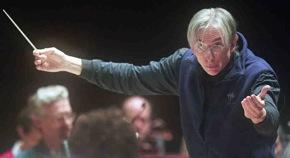Music and Dance of Bali Coming to the City
A phantasmagorical winged figure from a temple door, a carved offering shrine, coin images of deities — the Asian Art Museum's Bali exhibit (Feb. 25–Sept. 11) seems to be all in motion, very different from the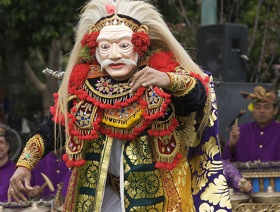
Photo by Dave Golden
There is no separation in Bali between visual and performing arts. The title of the current exhibit in the Asian Art Museum is both descriptive and complete: "Bali: Art, Ritual, Performance."
With music and performance — puppetry, gamelan (percussion orchestra), and masked dances — surrounding the show, 130 artworks on view all have to do with sacred and secular dances, parades, and court ceremonies.
In view of Bali's historic fame for its artistic culture, it's surprising that this is the first such comprehensive exhibit in the U.S. The Asian Art Museum is the exclusive venue for the show.
Major local artists long involved with Balinese culture are Grateful Dead drummer and music producer/activist Mickey Hart, and Oakland's Sekar Jaya gamelan orchestras. Hart has produced an album, The Bali Sessions, and donated to Sekar Jaya part of what is perhaps the only gamelan jegog (all-bamboo ensemble) existing outside Bali.
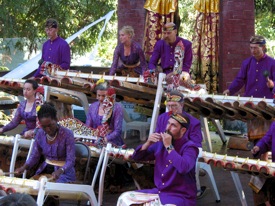
Photo by Graeme Vanderstoel
The schedule for gamelan performances in the museum's Samsung Hall: 6 p.m. on March 3 (open rehearsal); 3 p.m. on March 6 (part of a Target Sunday program); 7 p.m. on March 11; and 2 p.m. on March 12 (full performances). Additional Sekar Jaya concerts are due in June.
The March shows are part of The Creatures of Balinese Mythology, a new multidisciplinary collaborative work supported by a Creative Work Fund Grant, the James Irvine Foundation, and the Zellerbach Family Foundation. Gamelan Sekar Jaya is collaborating with I Made Moja, a Balinese painter, dancer, puppeteer, and shadow-play artist from the village of Batuan; and Master Balinese Artists Ida Bagus Made Widnyana, I Dewa Putu Berata, and I Ketut Wirtawan.
Quoting famed anthropologist Margaret Mead's description of Bali rituals, Asian Art Museum Director Jay Xu says, "Her observations in the 1930s may seem tinged with romanticism today, but the richness and vibrancy of the cultural traditions of the island are as evident now as they were then."
Curator Natasha Reichle had to deal with the difficulty of presenting objects living in performance context "in a museum setting, the objects remaining separated from the forces that originally gave them meaning."
This, she says, is especially true of objects whose independent powers come into play in the midst of ritual or performance. "The Balinese do not view a statue as a deity in its own right, but merely as a receptacle for the visitation of the divine."
To meet the challenge of presenting in context, the museum's education department has involved the Bay Area Balinese community and artists from Bali in offering demonstrations and performances of some of the ritual and performing arts during the course of the exhibition.
Kids' Mozart Camerata Playing for Children's Hospital
George Cleve's Mozart Youth Camerata is giving a concert on Feb. 20 for the benefit of Children's Hospital Oakland. The venue is the Calvary Presbyterian Church in San Francisco, and moderately priced tickets are available from the Camerata.
The program includes Mozart's Symphony No. 29 in A major, K. 201; Bach's Concerto for Two Violins in D Minor, BWV 1043 (with Audrey Vardanega and Ashley Mao); an aria from The Marriage of Figaro (soprano Khori Dastoor); Chopin's Barcarolle, Op. 60, and selections from Albéniz' Iberia (Robert Schwartz); and Iosif Andriasov's 1954 String Quartet in D Major, Op. 1 (Jupiter Chamber Players).
Will Budget-Cutting Clip the Wings of the NEA?
The National Endowment for the Arts is facing — along with everybody and everything — a deep cut in its budget. The U.S. House of Representatives votes on fiscal 2011 spending bills early next week, and amendments are expected to decrease — or even eliminate — funding for the NEA.
The House Appropriations Committee is discussing a $22.5 million decrease in NEA funding, as part of widespread cuts to discretionary spending. This would reduce the current NEA operating budget to $145 million — something that appears a large amount until you consider that it represents the entire support for all the arts of a nation of 308 million: about 70 cents per person. Compare that with much larger figures everywhere in recession-torn Europe. Yes, times are hard, but priorities should be clear.
Called "a critical component in the network of public, private, corporate, and philanthropic support," the NEA contributes to the development and economic growth of communities nationwide. A strong arts sector is an economic asset that stimulates business activity and tourism, improves lifelong learning opportunities, and sparks community vitality.
Every congressional district receives an NEA grant, and 40 percent of NEA funding supports work of the nation's state arts agencies. The NEA grants support arts education for children and adults, expand citizen access to performances, preserve great classical works, and nurture the creative endeavors of contemporary artists.
So, if you want to support the cause of continued modest support for the arts, let Congress know.
Praise for Former 'Boy Wonder' in Philadelphia
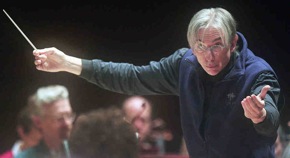
Photo by Akira Suwa
The Philadelphia Orchestra "hasn't always seen eye to eye with the boy wonder," writes Peter Dobrin in The Philadelphia Inquirer, but now that Michael Tilson Thomas is 66, things are looking up:
Michael Tilson Thomas plays an orchestra like a piano. He expresses himself with that kind of freedom. That he could do this Thursday with the Philadelphia Orchestra wasn't a given. And in fact, for the first few moments of his current program it wasn't clear whether a singular artistic vision, born of trust between conductor and ensemble, was in the offing.But by the end of the program, in Beethoven's Symphony No. 7, the depth of the partnership was striking. This orchestra hasn't always seen eye to eye with the boy wonder. The boy, however, is now 66, while the average player age has fallen considerably, and somewhere in the crisscross of these two factors something special and quite satisfying has developed ...
Tilson Thomas has a sensitive orchestral ear, too, evident in some particularly well-blended instrumental doublings (and in the creation of some pungent sonorities in the Schubert "Unfinished." ...). It's his emotional instincts, though, that give his interpretations an interesting edge. The first movement had a certain merry ease. The second, an "Allegretto," offered inevitability and some finely calibrated phrase-shaping. The third was crisp and correct, which only heightened the full-throttle release of the fourth.
It's what makes this orchestra shine: a conductor who thinks about how the movements of a piece relate to each other, rather than living emotionally from hand to mouth.
New Dances at the New ODC Theater
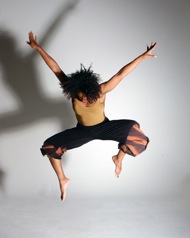
Photo by Andy Mogg
After performances by what is called the "Bay Area–centric roster" for the refurbished ODC Theater, which reopened last September, the 2011 winter/spring season there will cast a wider net, including performers from New York, Chicago, and Minneapolis.
Six weekends of performances include the return of the Black Choreographers Festival (Feb 17-19); a copresentation between ODC Theater and Chicago's Smith/Wymore's Disappearing Acts When Apparatus takes the stage (Feb 25-27); Sarah Michelson returning to San Francisco with her premiere of Devotion (March 4-6); the Thank You Bar from Minneapolis choreographer Emily Johnson (April 7-9); and more.
In the ODC Theater, the Black Choreographers Festival will feature Ramon Ramos Alayo, Raissa Simpson, Gregory Dawson, Portsha Jefferson, Deborah Vaughan, and Kyle Abrams. In Oakland's Laney College Theater last weekend, dancers include Mahea Uchiyama, Rashad Pridgen, Tyler Knowland, Paco Gomes, Amara Tabor Smith, Cory Action, and Teela Shine.
On Feb. 25-27, the BCF Next Wave Choreographers Showcase will be presented at the Dance Mission Theater, 24th Street at Mission in San Francisco.
Flórez in Fresno
What was Juan Diego Flórez doing on Valentine's Day in Fresno? Performing a recital in the Saroyan Theater. Not in Berkeley, not in San Francisco. Fresno, where "tickets were nearly sold out" in the 2,353-seat auditorium.
The tenor this year is performing only in three American cities: New York, D.C., and Fresno. Otherwise, February is taking him from Marseille to Bratislava to Brussels to Fresno, then Medellin and Bogotá in Colombia. His native Peru? No. At the end of last month, he received a rave review for a recital in the Royal Festival Hall.
It's a shame that no Bay Area organization got into the act.
Runnicles' 'Post-North American' Phase
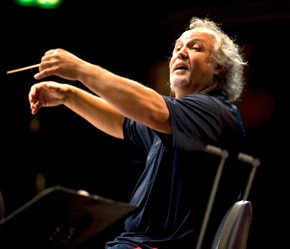
Photo by John Wood
Although Donald Runnicles will soon return to the San Francisco Opera to conduct Wagner's Ring cycles in the house where he was music director from 1992 through 2009, he is now said to be "beyond his North American phase."
So says Andrew Clark in The Financial Times, giving Runnicles a glowing review for leading a BBC Scottish Symphony concert in Glasgow on Sunday. Runnicles, 56, is chief conductor of that orchestra and general music director of Deutsche Oper Berlin. He no longer has permanent positions in the U.S.
Having successfully transferred his professional life back to Europe after nearly two decades in North America, Donald Runnicles is making his presence felt in the heavy-duty Romantic repertoire in which he has long excelled: Mahler symphonies at the Edinburgh festival, Wagner music dramas at Berlin’s Deutsche Oper, where next month he conducts a new Tristan und Isolde. ...The surprise was that the entire evening, which began with Haydn's Trauer Symphony No. 44, proved the opposite of a musical behemoth. Its most striking feature was the rapport the Edinburgh-born conductor has with his Glasgow-based orchestra in the 18 months they have been together. It's an un-showy rapport that does not rely on demonstrative gesture but reveals itself in the rapture and fluency of music-making, like a couple that instinctively knows what the other wants.
In today's world of promiscuous conductor–orchestra relationships, such uncomplicated music-making more than justifies Runnicles's decision to rediscover his Scottish roots rather than seek the limelight in London. He and his orchestra proposed a chamber-musical Haydn, with phrasing that explored the potential for storm-and-stress within the supposedly stiff corset of classical form. That made for an Adagio of infinite poise and a presto-finale of lightly-worn energy: a masterpiece revealed.
True to his operatic breeding, Runnicles found drama in Brahms’s brief choral climaxes: this was not one of those slow-moving performances that turns the Requiem into something insufferably solemn and stolid. No, it sustained a quiet radiance across long arcs of melody, showcasing a fresh-voiced Edinburgh Festival Chorus. ...
'Curtis on Tour' at Herbst
Pianist Ignat Solzhenitsyn, along with Curtis Institute of Music student clarinetist Kelly Coyle and violist Ayane Kozasa, will perform works by Kurtág and Brahms at a concert newly added to the San Francisco Performances season. The March 22 concert in Herbst Theatre is the organization's annual spring gift to season subscribers; for others, it's $25 general admission.Curtis on Tour pairs faculty and alumni with students. Solzhenitsyn, music director of the Chamber Orchestra of Philadelphia, and the two students will perform Kurtág's tribute to Robert Schumann (Hommage à R. Sch.), Brahms' Sonata for Viola and Piano, Book of Days by American composer (and Curtis graduate) Daron Hagen, and Mozart's Kegelstatt Trio in E-flat Major.

